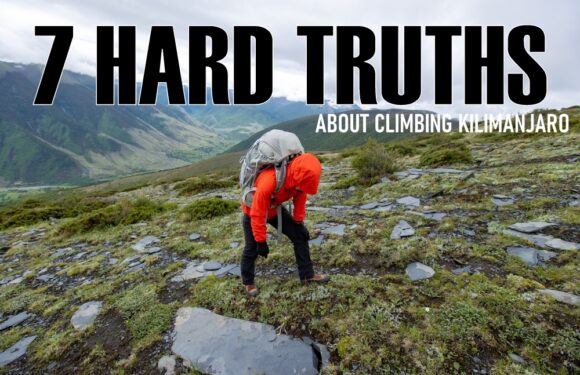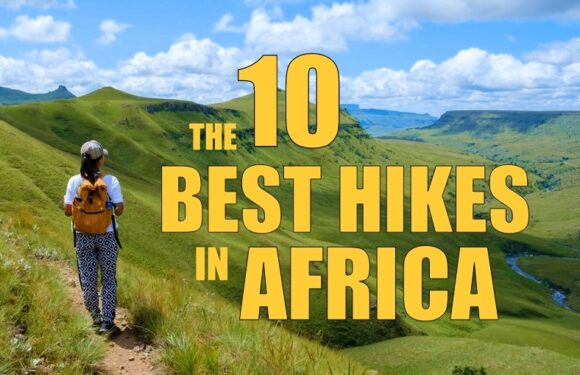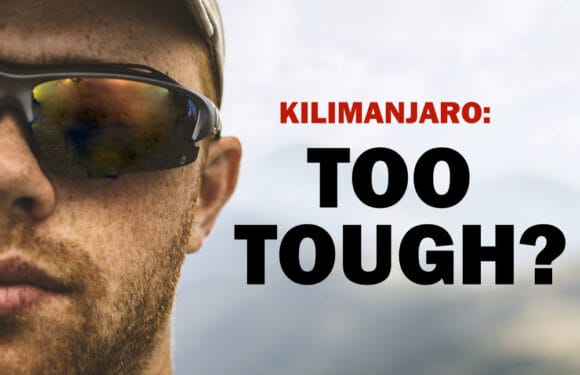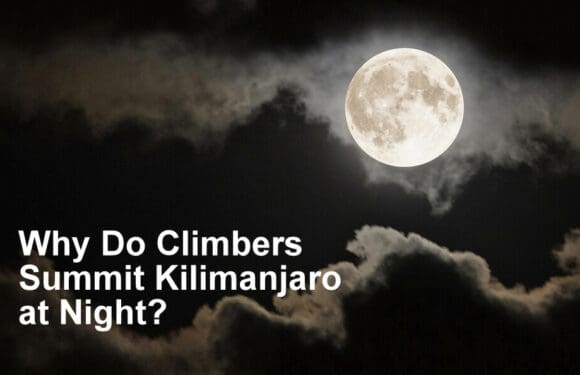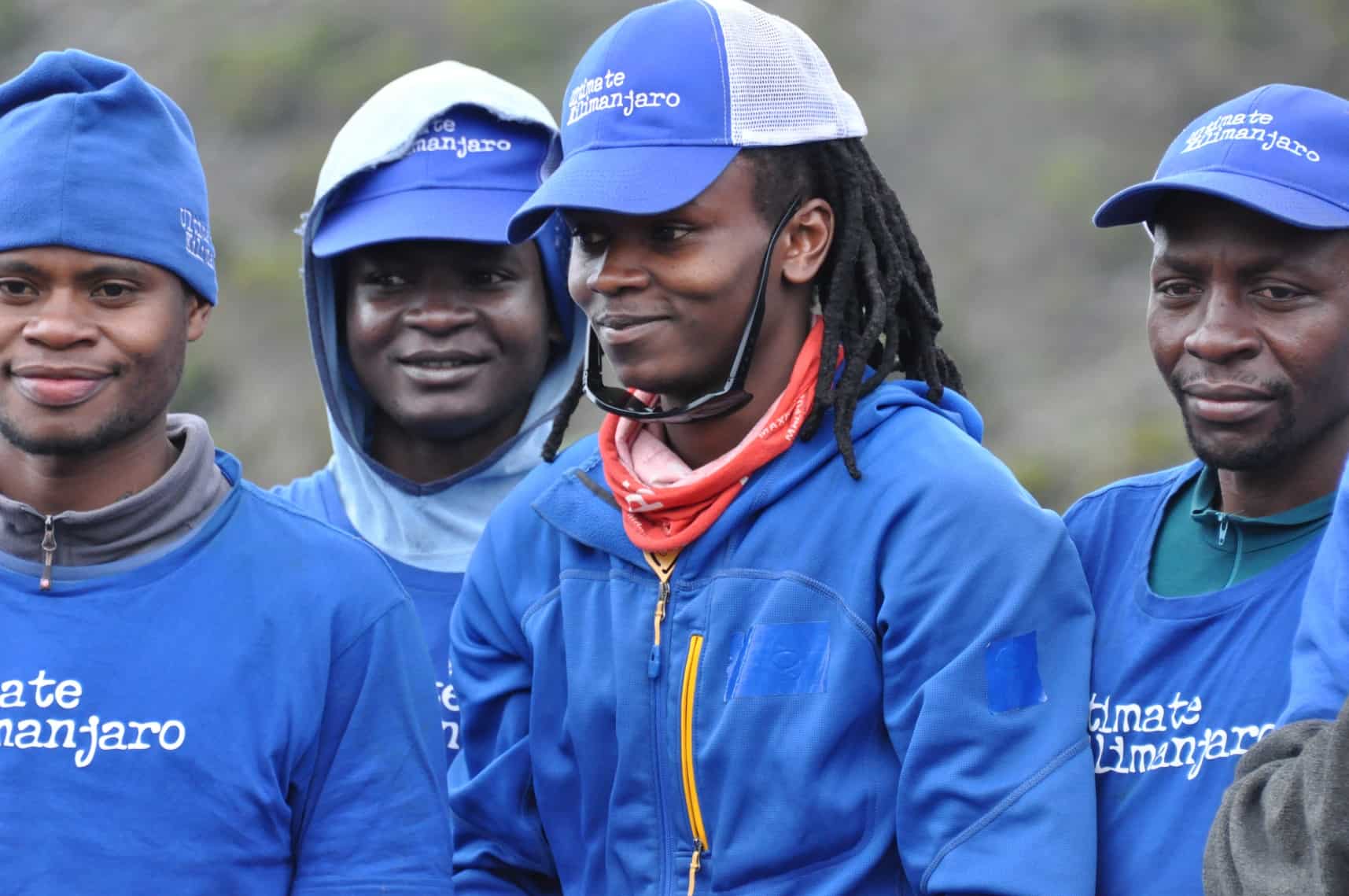
Why Almost Anyone Can Climb Kilimanjaro
Climbing Mount Kilimanjaro is an achievable goal for most individuals who maintain a reasonable level of fitness. The attainability of the summit is primarily due to two factors:
- No technical skills are required. Unlike other high-altitude peaks that require proficiency in using ropes, harnesses, ice axes, and crampons, Kilimanjaro is predominantly a hike. Participants are able to simply walk up to the top and walk back down. There is no need for advanced mountaineering techniques such as rock climbing, ice climbing, rappelling, or navigating with crampons.
- Climbs are fully supported. On other, more strenuous expeditions, individuals must transport all necessary supplies themselves. Kilimanjaro expeditions are facilitated by sizable support crews. These teams include professional guides, assistant guides, cooks, and porters. The guides are responsible for leading the group and ensuring everyone’s safety, while porters carry the communal gear and provisions. This arrangement allows climbers to focus on the journey with just a lightweight daypack. Additionally, climbers are relieved of camp duties, as the crew manages all aspects of camp life, including meal preparation, cleaning, water procurement, and tent management.
The two components drastically decrease the logistical and physical challenges of the climb. Despite these big advantages, the overall success rate is still surprisingly low. This reflects the mountain’s high altitude demands. Success is closely linked to climbers’ ability to acclimatize.
Kilimanjaro Summit Success Rates (Reported in 2006)

Below are the Kilimanjaro success rates as reported by Kilimanjaro National Park in 2006:
- All Climbers, All Routes: 45%
- All Climbers, 5-Day Routes: 27%
- All Climbers, 6-Day Routes: 44%
- All Climbers, 7-Day Routes: 64%
- All Climbers, 8-Day Routes: 85%
- All Climbers, 9-Day Routes: Data unavailable
The average success rate across all routes for reaching the summit of Kilimanjaro was reported to be 45% in 2006. The key takeaway from this data is the importance of allowing sufficient time for acclimatization. The longer the route, the higher the success rate.
How Are Success Rates Measured?
The park’s criteria for “success” is not clear.
There are three summit points on the mountain—Gilman’s Point, Stella Point, and the true summit Uhuru Point. When climbers reach any of these marks, a summit certificate is issued by the park and presented to the recipient after completion. Therefore, getting to any of these three summit destinations is likely counted as a successful summit in the reported figures.

Furthermore, each operator also defines success in inconsistent ways. And we suspect that some companies are outright lying in their numbers. For the record, when we refer to our success rates at Ultimate Kilimanjaro, we mean climbers who have reached the true summit, Uhuru Point.
Today’s Kilimanjaro Summit Success Rates
Unfortunately, Kilimanjaro National Park has not released updated figures since 2006, so we are left with data that is nearly 20 years old. These percentages are likely outdated. We believe that the success rates today are significantly higher. We estimate the current success rate on Kilimanjaro across all routes and operators is 70-75%. The marked improvement is attributable to climbers making more informed choices today.
When we launched Ultimate Kilimanjaro in 2007, most operators overwhelmingly led climbers on just two routes – Marangu and Machame. The Marangu route is a 5 or 6 day climb, and the Machame route is a 6 or 7 day climb. These routes have a reported success rate ranging from 27% to 64%. It is reasonable that the overall success rate would fall somewhere in the middle, at 45%.

Since our inception, with client success in mind, we have always steered clients away from these poor performing routes. Historically, we have guided primarily on the 8 day Lemosho route. 9 day routes didn’t really exist prior to 2006, which is why there is no data from the park for this duration. When the 9 day Northern Circuit was created in 2014, we were one of the first companies to guide on this highly successful route.
The main reason why our success rates have always been industry leading (along with great support and service) is that we specialized in the longer routes. We gave the climber the best shot at making it to the top. Nowadays, more and more climbers, from all companies, are opting for longer routes. Therefore, the overall success rates have correspondingly increased.
Kilimanjaro Success Rates By Route
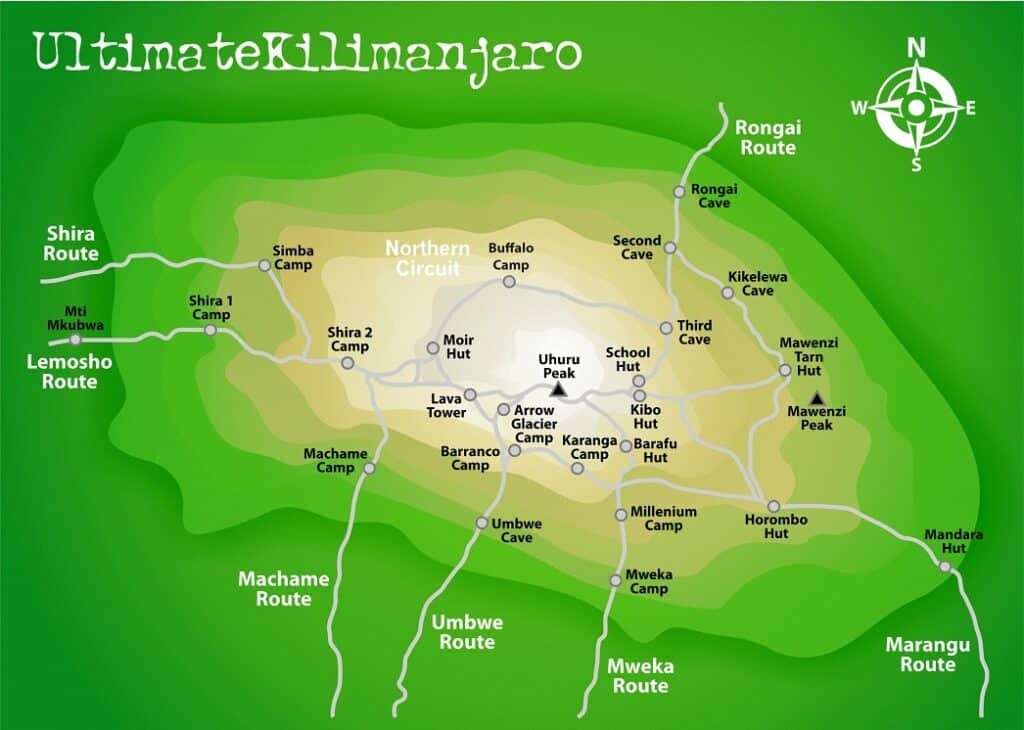
Kilimanjaro’s diverse routes offer different experiences, challenges, and chances of success. Here’s a detailed look at these variations:
- 5-6 Day Marangu Route: Often dubbed the “Coca-Cola” route, Marangu is popular for its gentle slopes and hut accommodations. It’s ironically known as an “easy route”, yet has the lowest success rates. This illustrates the limitations of shorter climbs for acclimatization. The park service last reported that the success rate of the 5 day Marangu route is around 30% and the 6 day Marangu route is about 50%. Our Marangu success rates are consistently 15-20% higher than these figures.
- 6-7 Day Machame Route: Known as the “Whiskey” route, Machame’s more demanding nature is balanced by better acclimatization opportunities. For all operators combined, it is estimated that 6 day Machame climbs have a success rate of about 50% and 7 day Machame climbs have a success rate of around 70%. Our 6 day Machame route has a success rate of approximately 70-75% and our 7 day Machame route has a success rate of approximately 85-90%.
- 6-7 Day Rongai Route: This less trodden, gradual path from the north offers a climb that is more quiet and remote. For all operators combined, it is estimated that the 6 day Rongai route has a success rate of approximately 50% and the 7 day Rongai route has a success rate of about 70%. Our 6 day Rongai route has a success rate of approximately 70-75% and our 7 day Rongai route has a success rate of approximately 85-90%.
- 6-7 Day Umbwe Route: Its steep and rapid ascent makes Umbwe the most challenging route. Data for the Umbwe route is lacking. We estimate that the success rate of the 6 day Umbwe route is approximately 50% and the 7 day Umbwe route is about 70%. We rarely guide on the Umbwe route.
- 8-Day Shira Route: Starting at a higher altitude, Shira puts climbers’ acclimatization ability to the test immediately. Data on the Shira route is lacking. We estimate that the success rate is 85% for the 8 day Shira route. We have not guided much on the Shira route.
- 8 Day Lemosho Route: Starting from the west, Lemosho offers the ideal balance of low crowds, beautiful scenery and a high summit success rate. It’s our favorite route. For all operators combined, it is estimated that 8 day Lemosho climbs have a success rate of about 90%. Our success rate for 8 day Lemosho has historically ranged between 90-95%.
- 9 Day Northern Circuit: The most extended route around the mountain offers the best acclimatization prospects. For all operators combined, it is estimated that the 9 Northern Circuit route has a success rate ranging from 85-95%. Our success rate for the 9 day Northern Circuit route is about 95-98%. Therefore, this route has the highest success rate on Kilimanjaro.
How to Improve Your Success Rate on Kilimanjaro

Acclimatization: The Key to Adjusting to Altitude
It should be clear by now that the longer routes are better because of their positive effects on acclimatization. Spending extended time at high altitudes allows your body to adjust to the reduced oxygen levels, thereby enhancing your success rates. It’s not merely the time spent but the ‘climb high, sleep low’ strategy that aids in better adjustment and reduces the risk of altitude sickness.
Recognizing and managing the symptoms of altitude sickness is crucial. Symptoms can range from mild headaches and fatigue to more severe conditions like acute mountain sickness (AMS), high-altitude cerebral edema (HACE), and high-altitude pulmonary edema (HAPE). Take preventive measures, such as walking slowly and staying hydrated, are vital. In addition, listen to your body and communicate openly with your guide. He can help you manage the symptoms before they become worse.
Physical & Mental Fitness: Preparing for the Climb
While technical climbing skills are not required for Kilimanjaro, a good level of physical fitness is. The trek involves long days of walking, often on steep and uneven terrain. Prior to your adventure, engage in a comprehensive training program that includes cardiovascular exercises, strength training, and hiking with a weighted pack. Being physically prepared not only improves your chances of reaching the summit but also enhances your overall experience on the mountain.

Of course, mental strength is important too. Mental fortitude helps climbers push through fatigue, discomfort, and the physical demands of the ascent. It’s the mind’s resolve that powers one foot in front of the other, especially when the body signals to stop. Push your limits when you train to build your mental resilience.
Gear: Being Ready For Everything
Having the wrong gear on a Kilimanjaro climb can significantly hinder your success and safety. Inadequate protection against the mountain’s extreme conditions, whether it be jackets or sleeping bags, can sap your energy and impede your recovery. Poor quality gear increases your risk of injury, reduces endurance and performance, and compromises safety.
The right equipment serves as a foundation for safety, comfort, and the overall success of the climb, while the wrong gear can lead to a cascade of negative outcomes.



















































